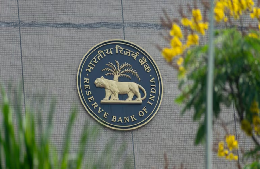“With a lot of effort, the inflation horse has been brought to the stable” is how the Reserve Bank of India (RBI) Governor described their consistent effort, over the last few years, to tame inflation and bring it closer to its tolerance band. Though the policy rates were kept unchanged today, the optimism was evident on the inflation management as the policy stance was changed to “neutral” and the GDP growth was retained at 7.2 percent for FY25, belying a lot of market commentary on growth numbers trending lower to ~7 percent.
The oft repeated statement in the Governor’s commentary was, “unambiguously focussed on durable alignment of inflation with target, while supporting growth”, signalling clearly, “that the horse has to be kept on a tight leash”, and hence any rate cut in the December policy review will clearly be driven by conviction around the inflation trajectory trending downwards (while acknowledging a higher marker for Q3 due to base effect). However, the chances of a small cut in December do get thrown up, considering that some of the markers around India’s growth story remain intact; with private investment & consumption as well as government capex expected to pick up in H2, a stronger kharif output and rabi sowing due to a good monsoon lending to a pick-up in rural demand, and a resilient current account deficit and forex position keeping the INR steady.
In fact, the RBI retaining their GDP growth projection of 7.2 percent for this FY and a much stronger 7.4 percent growth footprint for H2 seems to be coming from the expectation of a stable inflation complementing growth in private consumption, an improved outlook to agricultural output and rural demand on the back of a good monsoon, services sector buoyancy supporting a better urban demand, an increased capex spending by the Centre and States, and a higher private sector investment backed by healthy balance sheets of corporates and banks and a stable currency.
So also, the Governor signalled some moderation of inflation in Q4 of this FY and in Q1 of FY26, by lowering their estimates to 4.2 percent and 4.3 percent respectively versus their earlier projection. The Governor specifically made a mention of “prevailing and expected inflation” as one of the key inputs for shift in their stance to “neutral”, while alluding to adverse weather related shocks and/or accentuated geopolitical events leading to downside risks for the economy’s growth.
The Governor did share that the system liquidity has been comfortable since August and continues to be in surplus for now, given the pickup in government spending and decline in currency in circulation. So also, the yields on 3-month treasury bills and
CPs from NBFCs have eased and the 10-year G-Sec yield has also softened over the last couple of months, reflecting the policy pivot in the US and an improving global investor sentiment. The Governor did reiterate that the RBI will continue to be nimble and flexible in managing liquidity so that money market evolves in an orderly manner and continues to support progressive growth in the economy while also leading to a favourable inflation regime. The key things to watch out for in the present scenario would be the growth in employment; an increase in consumption demand (both rural & urban) spurred by private investment and government capex; a stable global environment; and no adverse weather event. To sum up, the larger mood presently is – cautiously optimistic – about the RBI’s next action.



